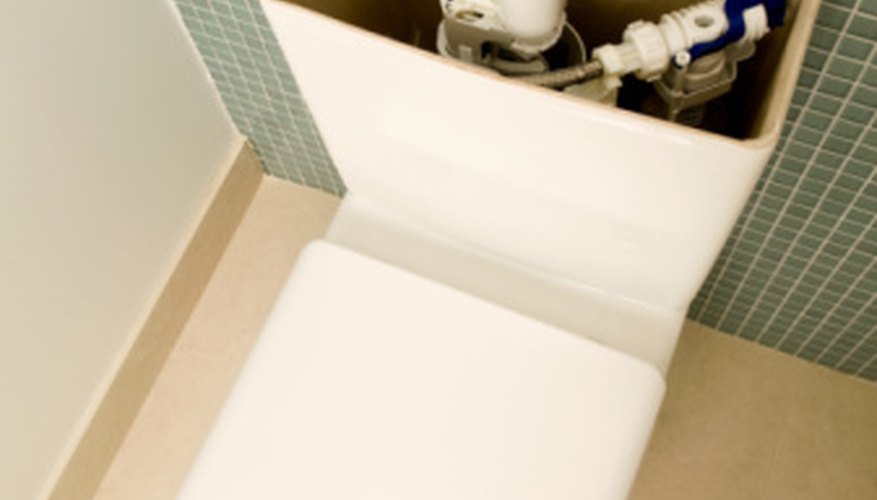A constantly running toilet cistern could signal a number of different problems with your toilet. The cistern (as it is commonly called in the UK and parts of Europe) keeps the water supply for the bowl prior to the flush. A fill valve refills the toilet after a flush, while a flush valve allows the water out of the cistern. You don't have to wait for a repairman to figure out how to repair a cistern. There are a few common problems that happen with cisterns frequently.
Check for the leak location in the cistern, if the problem is a leak, as this can give you an idea of where the problem is. If the leak is at the back of the tank, it could be the supply pipe or hose connection to the inlet or the tank bolts. If a leak is present underneath the part of the tank that connects to the toilet bowl, you may have a flush valve leak.
- A constantly running toilet cistern could signal a number of different problems with your toilet.
- If a leak is present underneath the part of the tank that connects to the toilet bowl, you may have a flush valve leak.
The first step in dealing with any type of cistern problems is to cut the water supply for the cistern. The water supply valve is located underneath or to the side of the cistern. Turn the knob on the end of the supply to the right in order to stop the water flowing to the cistern. Press firmly down on the handle to flush the water inside out into the bowl.
Place a towel on the floor underneath the cistern to catch any water that may run out.
Loosen the water supply hose or pipe from the bottom of the cistern with a pair of pliers.
- The first step in dealing with any type of cistern problems is to cut the water supply for the cistern.
- Loosen the water supply hose or pipe from the bottom of the cistern with a pair of pliers.
Replace a broken fill valve by loosening the nut underneath the fill valve with a wrench. Lift the broken fill valve out of the tank and replace it with a new one. A coating of silicone grease on the bottom of the fill valve stopper will help keep a watertight connection.
Screw the bolts on the bottom of the tank tight with a wrench to stop a leaking tank nut. Use a screwdriver to hold the bolts steady in the tank as you tighten, or have an assistant hold it for you. If that doesn't stop the leak, check the stoppers on the top of the bolts as they can start to come apart after a time underwater. Replace if needed.
- Screw the bolts on the bottom of the tank tight with a wrench to stop a leaking tank nut.
Loosen the bolts on the underside of the tank and remove it from the back of the toilet. Turn the tank upside down and loosen the nut underneath. Pull out the overflow tube and flush valve assembly after unhooking it from the flush chain. Replace with a new flush valve and tighten the retaining nut. Reconnect the handle chain.
